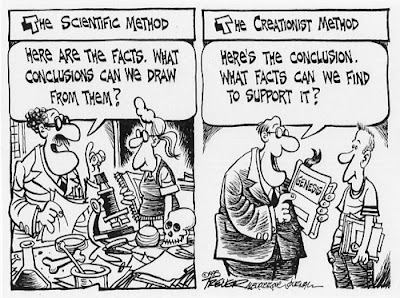I will never stop being fascinated by the human brain and it’s capabilities. After taking my first psychology class during my senior year of high school, I looked at life from a whole new perspective. And when I took my first anthropology of human evolution class at UCSB, I realllllly looked at life in a whole new way. The evolution of human beings’ physical bodies and cultural life has all been dependent on the evolution of the human brain, which is dependent on natural selection. Why is this idea of evolution so controversial? Why do people chose to ignore amazingly interesting and thought provoking facts and information that explain why humans are the way we are?
Maybe it’s hard for me to imagine questioning evolution because I never grew up religious. I had the opportunity to be open minded about how life came to exist and never thought there was a simple answer to everything. Once I took classes like astronomy, anthropology, and psychology, there was really no way else to understand this crazy world and the creatures that live in it, except through an evolutionary lens.
From an evolutionary psychology view, “the mind is a set of information-processing machines that were designed by natural selection to solve adaptive problems faced by our hunter-gatherer ancestors. This way of thinking about the brain, mind, and behavior is changing how scientists approach old topics, and opening up new ones” (Comsides & Tooby, 1997). Taking this perspective enables us to understand how humans with normal functioning brains are able to do certain things and behave in certain ways, which solved problems and increased the chances of survival for our ancestors.
For example, how is it that you can toss an apple to your friend and it flies perfectly in reach of their hand? Not only did you just judge their exact distance from you, but you also threw the apple in a perfect mathematical arch and with just the right amount of force for them to easily catch it. Consciously, throwing something seems so simple, but your brain had to evolve a very complicated neural circuitry in order to complete this action. Why did your brain evolve to pull this off? Because natural selection favors brain circuitry “that was good at solving day-to-day problems of our hunter-gatherer ancestors” (Comsides & Tooby, 1997). Those whose brains were able to solve such problems as finding mates, hunting food, and defending themselves against predators were the ones who survived. By surviving you are able to reproduce, and through reproduction you carry on your genes – the very genes that give your offspring the same mechanisms to problem solve. The act of throwing something the perfect distant, with the right arch, and the right force, was most likely favored by natural selection because this action allowed our ancestors to hunt animals with precision and success. While modern humans can pop over to the grocery store and have no need to spear a buffalo, the mechanism for hunting remains in our brains. “Evolution provides us with mechanisms within which the environmental influences may act” (Beaty, McCroskey, & Floyd, 2009). Because the evolution of neural circuitry is such a long process, our brain still has the precision to throw things, but the environment has caused us to use the mechanism for purposes other than hunting.
The beauty of science is that it always continues to seek the truth. As new information arises, what we thought we knew is reconsidered and adjusted accordingly. Before science, one might look up to the sky or the world around them and think, “how was this world created?” The easy answer is to believe that a magical higher power simply spun a wand and designed everything in mere moments; humans being one of those things. However, today we have such a vast amount of knowledge acquired through scientific research and evidence, that to conclude humans are able to toss an apple or throw a baseball because God made us that way is not only the easy route, but the foolish route. By studying evolution, and taking an evolutionary psychology perspective, understanding the human brain might be much more complicated, but it’s so much more fascinating.
Beaty, J. M., McCroskey, J. C., Floyd, K. (2009). Biological dimensions of communication. Cresskill, NJ: Hampton Press Inc.
Cosmides, L., & Tooby, J. (1997). Evolutionary psychology: A primer. Retrieved from UCSB, Center for Evolutionary Psychology Website: http://www.psych.ucsb.edu/research/cep
primer.html



No comments:
Post a Comment